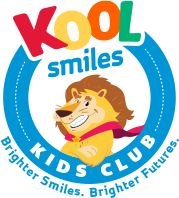
How Much Do Teeth Braces Cost with Insurance?
When a dentist mentions correcting your child’s teeth with braces, there are a few questions that’ll likely pop into your mind. Are braces really necessary? What’s the cost? Are braces worth the price? Are traditional braces better?
Let’s clear some things up!
Does My Child Really Need Braces?
The American Association of Orthodontists (AAO) recommends that every child see an orthodontist for a check-up by age seven. Many orthodontic issues are time-sensitive and are easier to manage if they’re caught early. In some cases, a well-timed visit with an orthodontist can prevent a problem entirely.
If your child has noticeable bite issues, you should take them to see an orthodontist as early as possible. “Bad bites” include:
- Crossbite, where the teeth are misaligned
- Crowding, where it seems like there are too many teeth and too little space
- Open bite, where the front (top and bottom) teeth don’t meet when biting
- Protrusion, where some teeth point outward – sometimes called an “overjet”
- Deep bite, the opposite of overjet, where the teeth slant inward
- Underbite, where some top teeth hide behind the bottom teeth
- Spacing, where there are abnormally large gaps between some teeth
Braces can seem pricey upfront, but they’re a lifelong investment with long-term benefits for wearers with good hygiene and retainer habits. Medical benefits include improved chewing, alleviation of some speech issues, easier cleaning, and reduced periodontal disease. The benefits don’t stop there, though. Research shows that people with normal bites are perceived as “more attractive, intelligent, agreeable, and extraverted.”

How Much Do Braces Cost?
Insurance rarely covers the entire cost of braces. Even with top-tier insurance, you can expect to pay some fees, like copays, deductibles, and coinsurance, out-of-pocket. It’s important to note that insurance companies often only cover a portion of the costs for wearers under 18.
Here’s what you can expect to pay for different types of braces:
-
- Traditional metal braces typically cost between $3,000 and $7,000. The cost may vary depending on the duration of treatment required and how much correction is required.
Any orthodontist can fit metal braces – they’re well-practiced in working with this common type. Traditional braces carry a lower risk of complications. Metal braces may be a little easier to manage, especially for younger children, as they can’t be misplaced or easily damaged. - Ceramic braces range from $4,000 to $8,000.
- Traditional metal braces typically cost between $3,000 and $7,000. The cost may vary depending on the duration of treatment required and how much correction is required.
Ceramic braces are a little more subtle than metal braces in terms of appearance. They carry the same benefits as metal braces, like easy care and minimal risk of loss or damage.
- Invisalign aligners usually cost between $4,000 and $7,400. There’s an extra cost for replacing lost or damaged aligners.
Invisalign aligners are an excellent option for people who are self-conscious about wearing braces. They’re difficult to see, even up close. Invisalign aligners can’t correct severe alignment issues. Some people develop a temporary lisp when they start wearing aligners, so it may be best if your child starts them during summer break or another school holiday. Of all the types of braces, Invisalign aligners require the most care and caution. They’re easy to lose, easy to forget, and they can’t be worn while eating or drinking anything other than cold or cool water. For those reasons, aligners may not be ideal for children. - Lingual braces can cost between $8,000 and $10,000, making them the most expensive option (by far).
Lingual braces are braces that are placed behind the teeth. The fitting process is somewhat complex, and you may struggle to find an orthodontist who works with them. They’re custom ordered and produced, which accounts for the higher price. Like Invisalign aligners, lingual braces are great for wearers who are self-conscious about having braces, but they can cause temporary speech issues.
The bottom line? Even with insurance, braces are an investment. Discuss the risks and rewards with your child’s dentist before making a decision, and especially when choosing which type of braces are best suited for your child.
What Other Costs Are Associated with Braces?
The cost of the actual braces isn’t all you’ll need to consider when preparing for the cost of orthodontic treatment. Here are other (certain or possible) costs to consider:
- Visits to the orthodontist. Your child will need check-ups, progress checks, adjustments, and cleanings.
- Tooth removal is crucial if your child’s orthodontic issue is overcrowding. Extraction costs can add to your tab.
- Palate expansion, where the jaw is widened to suit the projected alignment of your child’s teeth, is another common orthodontic treatment performed ahead of braces.
- Overbite or underbite correction or jaw alignment may be recommended alongside braces treatment.
The cost may also increase if:
- Progress is slower than expected, and treatment duration increases. Every extra year of braces wear can tack a couple of thousand dollars onto the cost.
- The wearer is 18 or older. Braces are typically slightly more expensive for adults, and again, insurance companies usually only cover part of the cost of braces for wearers under 18.
- Complications arise. While braces are generally safe, it’s possible to develop enamel loss, cavities, and gum disease if hygiene becomes an issue.
What Factors Affect the Cost of Teeth Braces?
The surest way to get an accurate estimate of cost for your child’s braces is to book a consultation with a dentist or orthodontist. They can fill you in on important (cost-determining) details, including:
- The type of braces best suited for your child
- The current state of your child’s teeth
- The projected treatment duration
Typically, if multiple types of corrections are needed, the duration (and the cost) will be higher. There’s no one-size-fits-all treatment plan or price.
Kool Smiles Kids Club partners will work with you and your insurance company to ensure you don’t have to stress about the high cost of teeth braces (with or without insurance). The health of your child’s teeth is important to our partners, which is why they aim to provide exceptionally affordable, high-quality dental services.
Kool Smiles Partners Make Braces for Teeth Affordable
You can expect affordable, quality dental care at all our partner locations. Our partner dental professionals can provide you with all the information you’ll need to make the right decision for your child’s dental needs.
Some Kool Smiles Kids Club partner locations have in-house orthodontists who can provide affordable braces consultations or treatment. Our partners will work with your budget. They accept most types of insurance, and they offer payment plans for those without insurance.
